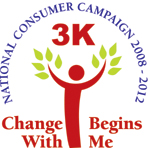| Get food labels |
 |
 |
 |
| Written by 3K Admin |
| Monday, 16 February 2009 14:19 |
|
Saturday February 14,2009
Nutrient information for vitamins, minerals, sodium and cholesterol is optional. (Check the Nutrition Month Malaysia 2008 Guide at www.nutriweb.org.my) Hereís a brief on what to look for when we scour through the mind-boggling variety of food products in the market. Itís unrealistic to carry a guidebook on additives when we shop but paying attention to the labels is a good start!†  Label 1: chicken sausage (locally made) i. The label chicken meat is only a fraction of the content. The flavour enhancers give you the chicken ďtasteĒ. It would be good if the manufacturer can list the ratio of chicken, corn starch and soya protein in sausage. ii. Manufacturers identify food additives by E codes. For example, E452 is polyphosphates (salt of phosphoric acid), used as an emulsifier/stabilizer and is considered safe in food use. E250, sodium nitrite, is a synthetic preservative banned in some countries and can cause nausea, headaches and dizziness. And E252, potassium nitrate, a preservative/colour fixative also banned in some countries. Its potential effects are asthma, kidney inflammation and dizziness. Both additives are used in cured and processed meat, sausages and bacon.
i. This is a common Nutrition Fact label found on packaged or canned food. The data is based on per serving, hence if you eat half a cup of the tomatoes, you are getting 2% of your carbohydrate and 11% of your sodium intake for the day (based on a 2,000-calorie diet). ii. Take note of the high-fructose corn syrup (HFCS). A common sweetener and preservative, HFCS is made by changing the sugar (glucose) in cornstarch to fructose ó another form of sugar, and the end product is a combo of fructose and glucose. HFCS is a popular ingredient in soft drinks and processed foods because itís cheaper than sugar and extends the shelf life of the food. Though HFCS on its own will not kill you, itís a reliable marker for foods that have been highly processed. Like plain refined sugar, over-consumption of HFCS leads to obesity and Type 2 diabetes. iii. Calcium chloride (chloride salt of calcium) is regarded as safe if used in low levels while citric acid (derived from citrus fruit or corn) often contains MSG and may provoke symptoms in those who react to MSG. These codes are only a general guide. Each individual reacts differently to chemical exposure. The type and severity of reaction depend on factors like the personís health, the amount of additive-laden food eaten, age, job and living environment. Source: http://thestar.com.my/lifestyle/story.asp?file=/2009/2/14/lifefocus/3235358&sec=lifefocus † |
| Last Updated on Tuesday, 17 February 2009 11:56 |


